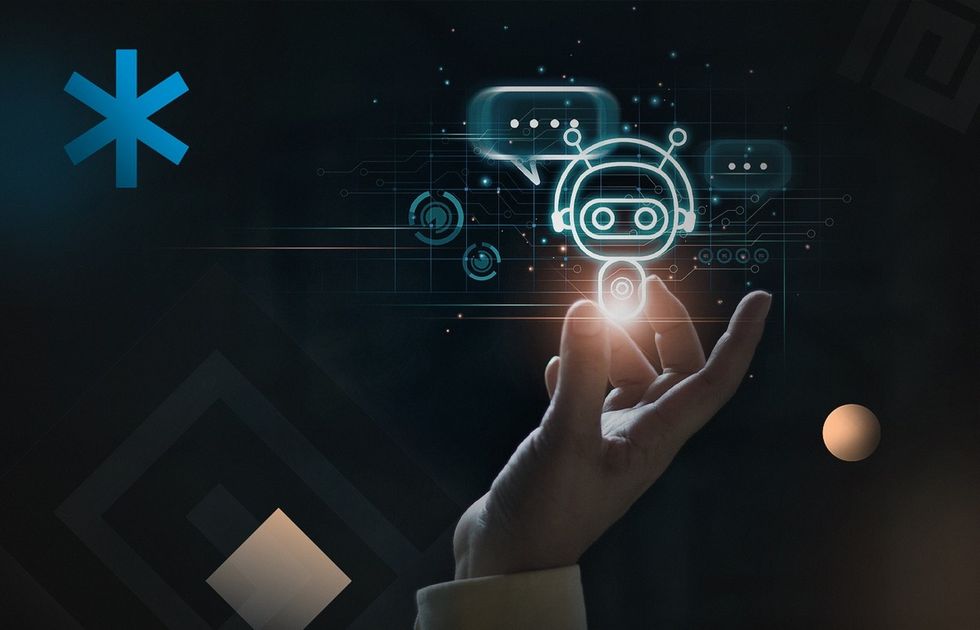
Key Takeaways
- Modern enterprise chatbots extend company reach by automating customer support and internal workflows, from scheduling to report composition.
- AI chatbots boost engagement: 61% of users value trust in AI, and 73% feel treated as individuals rather than numbers.
- Chatbots provide 24/7 support, resolving queries instantly and improving customer satisfaction around the clock.
- By enhancing service consistency and personalization, chatbots can increase brand loyalty by up to 62%.
Scaling customer support, automating internal processes, upgrading data packages, detecting fraud, and even upselling — these are the superpowers modern enterprise chatbot development has. With 66% of consumers expecting businesses to know their unique needs and expectations, AI-powered chatbots can cater to that need and offer enterprises a competitive edge.
These small yet mighty AI-based applications can unlock numerous possibilities for enterprises to empower customer self-service and automate complex interactions. Read on to learn how they do it and what industries can benefit from implementing enterprise chatbots with Acropolium’s practical insights and case studies.
How Chatbots Drive Enterprise Business Value
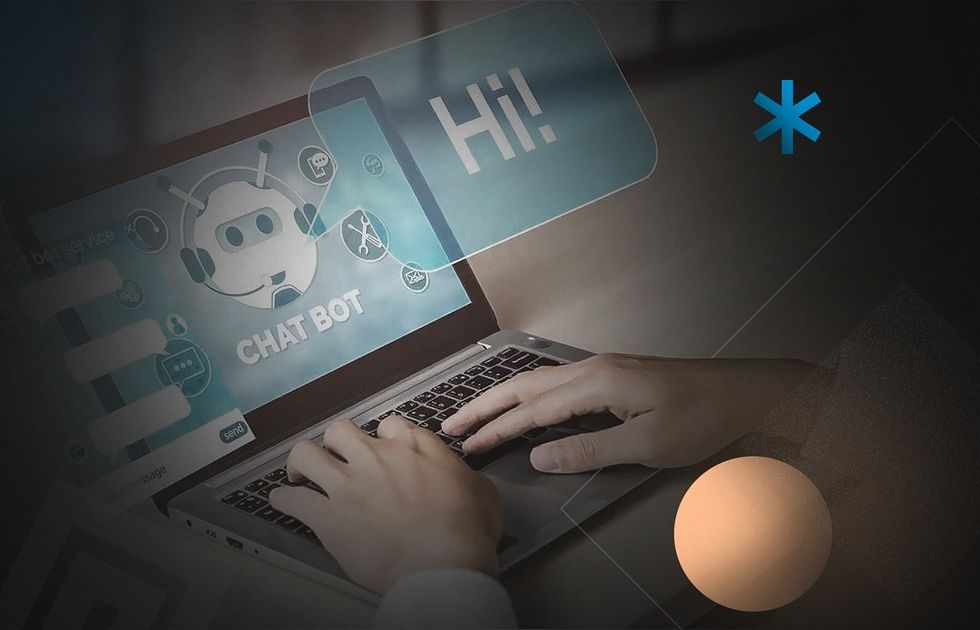
Developing enterprise chatbots can help companies extend their reach and expand their presence. A chatbot powered by AI can help your employees prioritize tasks, schedule meetings, compose reports, and take over routine tasks. But that’s only a tiny part of what chatbot development can do for enterprises. Other benefits include:
- Providing omnichannel support. 56% of consumers report that the most frustrating aspect of customer service is the need to explain the same information multiple times. AI-powered chatbots remember every conversation they have across various communication channels and can offer consistent user support.
- Increasing customer engagement. Chatbots are intelligent enough to analyze customer details and previous requests and quickly drive conversations. Research shows that 61% of customers believe AI advancements make trust more important than ever. At the same time, 73% feel companies now treat them as individuals, showing how AI is driving more personalized experiences.
- Keeping costs down. Chatbots can take over a lot of tedious, repetitive tasks like filing insurance claims or generating invoices. They can also cut down the time your staff usually spends dealing with customer queries. This lets your employees focus on high-value customer interactions.
- Improved data collection and analytics. Chatbots can collect vast amounts of user data during conversations, but ensuring that data is accurate and secure is key. By integrating blockchain, every interaction can be recorded in a tamper-proof ledger, improving data integrity and traceability. This combination not only enhances trust but also enables more reliable analytics and personalization.
- Boosting brand loyalty. When customers are happy with your service, they become regulars. Investing in chatbots can help your company provide excellent customer service and grow brand loyalty by 62%, as seen in our AI chatbot project for an automotive client.
- Delivering 24/7 support. Speed and convenience are paramount for modern businesses. Chatbots can resolve client queries very quickly, providing customer service to be available round the clock. Fortunately, chatbots can handle this task.
- Opening new revenue channels. Chatbots have the power to grow your company’s revenue by 63%. Having conversational AI under the hood, they can gather your customer’s preferences and suggest products and services they may be interested in.
These are only some of the reasons why building a chatbot for an enterprise can help your company stay ahead of the competition. Yet, not all chatbots are equally effective for particular tasks. Let’s look at enterprise chatbot types and the purposes they can serve.
Types of Chatbots for Enterprises
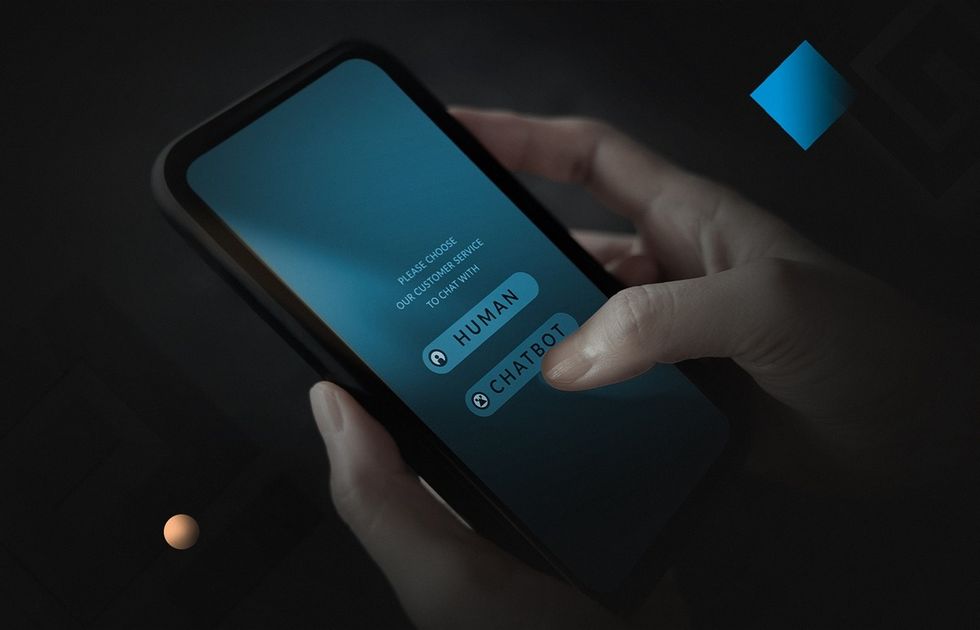
Modern enterprise chatbots are often associated with AI since it allows them to handle requests without human intervention. Scripted bots backed by decision tree hierarchies can only be sufficient for simple FAQ queries and can’t keep pace with enterprise customers’ demands.
So if you plan to make a chatbot for an enterprise, here are the four main options to choose from.
Conversational AI-powered Bots
These bots have deep learning, natural language understanding (NLU) and NLP at their core to capture, interpret, and analyze users’ voice commands. No more robotic voice: conversational chatbots respond in fluent, natural language.
Just like other contextual chatbots, voice bots can learn from their interactions. And you can train them with industry-specific cases to understand your audience requests.
Now that you know what types of chatbots you can use to drive your enterprise business value, let’s look at the industries that can benefit most from integrating virtual chatbot assistants into their flow.
Task-oriented (Transactional) Bots
Task-oriented bots focus on completing a specific task or transaction. They typically follow predefined rules or flows to guide the user step-by-step. For example, a task-oriented bot might take an appointment request or process a payment. Such bots are usually built on scripted logic and can answer routine requests very quickly.
However, if a user asks something outside the scripted flow, the bot will fail or give an irrelevant answer. To mitigate this, many systems combine task-oriented bots with fallback options (like handing off to a human agent) or use simpler hybrid approaches.
Rule-based Chatbots
As the name suggests, these chatbots create conversational flows using a series of defined rules and if/then logic. Once you determine the conditions for your chatbot (set of facts, rules, query types, words, and synonyms), it can provide answers almost instantly.
Naturally, rule-based enterprise chatbots fall short when a query falls outside the scenarios you trained them for and can neither answer it nor learn through interactions.
Keyword Recognition-based Chatbots
Thanks to natural language processing (NLP), these chatbots can respond appropriately by analyzing the text to find specific keywords from free text input. It gives users more freedom and a feel of natural conversation.
Yet, keyword recognition-based chatbots fall short when a query contains too many keywords related to different questions. To control the flow of the conversation, companies usually use a combination of menu-based and keyword recognition-based chatbots.
NLP-powered Chatbots
NLP-powered chatbots use natural language processing (NLP) and machine learning to understand free-form user input. They interpret intent and entities in the user’s message, not just keywords, and can handle more complex requests. These chatbots parse an utterance into its intent (the user’s goal) and extract relevant entities (details like dates, product names, etc.).
For example, an NLP bot could recognize that “I need to book a flight to London next Friday” has the intent book_flight with entities “London” (destination) and “next Friday” (date), and then carry out that task. Importantly, if the user then says “Actually make it Saturday,” the bot uses its stored context (the pending flight booking) to update the date without starting over.
Contextual Chatbots
Backed by machine learning (ML) and artificial intelligence (AI), contextual chatbots can self-learn and improve based on their interactions with users. These chatbots remember previous conversations and can strengthen their responses thanks to deep learning.
They can cater to customer queries like ordering food, booking tickets, supporting supply chain operations, and more.
Which Industries Should Consider Building an Enterprise Chatbot

AI chatbots find wide acceptance in diverse business environments and use cases — from logistics to finance — thanks to exclusive customer support and internal processes automation. Here are industries that can reap the benefits of creating an enterprise chatbot.
Retail
Chatbots have all prerequisites to boost sales, improve customer satisfaction and brand loyalty. An AI chatbot in retail can help with anything from finding stores and placing orders to personalized tracking and managing complaints.
For instance, it can help find specific products in stock or issue an order for more items.
Insurance
A recent Deloitte report notes rising AI adoption across industries, with major liability risks emerging, especially for non-life insurers. By 2032, AI-related insurance could bring in $4.7 billion annually, growing at a projected 80% CAGR. Indeed, chatbots can perform various tasks to reduce wait times, simplify insurance-related processes, and enhance customer service.
This includes customized quotes, answering policyholder queries 24/7, and identifying suspicious patterns when processing claims.
Media & Entertainment
Using conversational AI chatbots can help media and entertainment companies better engage with their audience, curate content, and collect data to improve customer experiences.
Thanks to having NLP, the bots can remember the context of each conversation they handle and use it to offer personalized recommendations and offers. What’s more, they can help book tickets or find events in a few seconds.
Real Estate
Using chatbots can help real estate agents respond to their leads irrespectively of the working hours or the time they come to the website. Chatbots can provide multi-platform support and reach out to your customers across different channels, including Facebook Messenger, Slack, SMS, and others.
E-commerce
E-commerce chatbots can help engage prospects, understand their requirements, and even guide them toward the products they might want. Chatbots can serve as personal shopping assistants, helping purchase items without filling out long check-out forms.
Furthermore, developing enterprise chatbots can boost sales by simplifying the shopping experience.
Hospitality and Travel
The primary purpose of hospitality chatbots is to improve the guest experience that restaurants and hotels deliver. An AI bot enhanced with NLP can lower customer service costs by handling most of your bookings and reservations and free your customer support team for the tasks chatbots can’t do.
Integrating AI chatbots can increase the booking rates and give your company a leg up by sending personalized targeted offers, notifications, and friendly reminders.
Healthcare
Using chatbot technology in healthcare can cut administrative costs and provide real-time assistance to those who need it. Powered by ML algorithms, chatbots speed up the initial assessment by asking the patient about their symptoms and even suggesting a possible diagnosis.
Key Features for Enterprise Chatbots
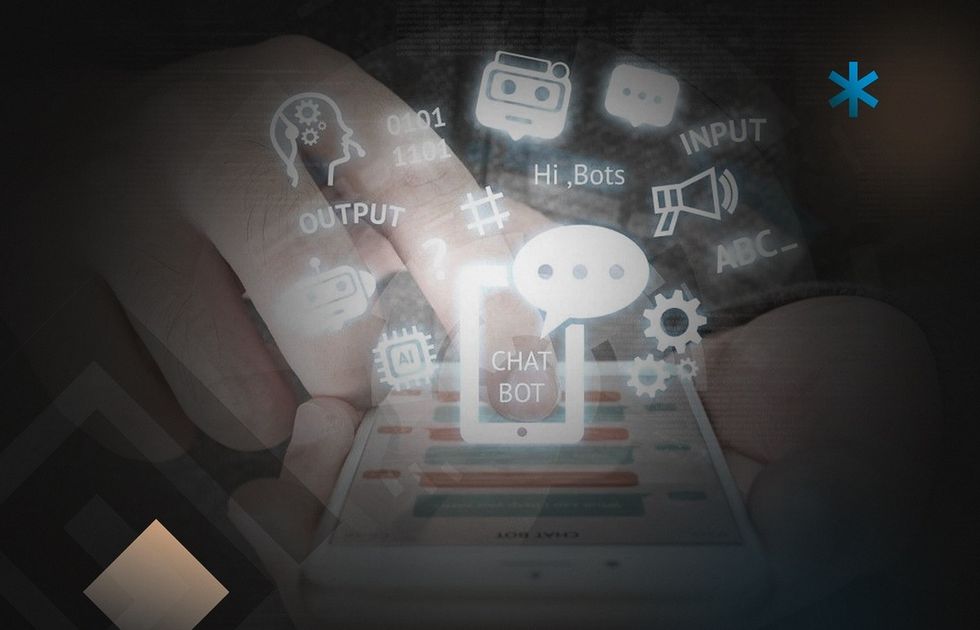
What makes a great chatbot? Is it speed, ability to learn, or maybe a sense of humor? We’ve gathered the essential chatbot features to help your business thrive.
- Omni-channel presence. AI-enabled chatbot can give your target audience a coherent and seamless experience across all devices and communication channels. Centralizing customer data from different channels can help avoid duplication and offer consistent user support.
- Integration with enterprise systems. Depending on your business specifics, you can integrate data from custom services, business applications, or third-party apps like Salesforce, Slack, Zoho CRM, Mailchimp, Zendesk, Google Sheets, and more into your chatbot.
- Contextual memory and personalization gives you a chance to reflect your company’s identity and values through designing conversation flows and offering customers contextualized experience. You can make your bot understand natural language (even regionalisms) and use emojis, gifs, and images to achieve this.
- Scalability and security. Enterprise chatbots are built to scale effortlessly, handling thousands of simultaneous conversations across channels without compromising performance. They also follow strict security protocols, such as encryption, authentication, and role-based access, to protect sensitive customer and business data.
- Analytics and reporting. Chatbots track interactions in real-time and generate detailed reports on user behavior, satisfaction, and resolution rates. These insights help enterprises fine-tune their services, identify gaps, and make data-driven decisions for continuous improvement.
- Image recognition lets your chatbot detect objects in the image, recognize them, and answer questions. Deep learning techniques can even help your chatbot hold meaningful conversations about specific images your customers upload.
- Speech recognition allows your chatbot to convert voice commands into text. Once done, the information goes through the same processing as the written text.
- Natural language understanding empowers your chatbot to understand and analyze human inputs and handle fluid and efficient conversations. NLU lets your chatbots automatically learn from every conversation they handle.
- Sentiment analysis is a subset of NLP that helps you identify and analyze emotions and measure their intensity. This helps to understand whether the conversation is neutral, positive, negative, or objective. Then, your chatbot segments the audience based on satisfaction level and modifies the responses to drive the conversation accordingly.
- Information retrieval approach allows providing human-like answers without human intervention. It helps to sort out user queries, match them with those in its database, and answer them accordingly (using pre-stored or trained options).
- Push notifications can help you re-engage churned users and keep the active ones engaged. Your chatbot can notify customers about your product updates, remind them of their incomplete purchases, share insights, promotional messages, and more.
- Audience segmentation lets your chatbot collect basic qualification details to better understand the audience (segment your users) and personalize their next steps. You can decide on several attributes to categorize your audiences into specific segments.
- Sales and conversion are also among the superpowers of AI chatbots. They can assist your customers with pricing queries, choose the best pricing plan, offer product recommendations and even automate appointment bookings. As a result, it helps reduce cart abandonment rate, ensure better engagement with customers, and boost conversion.
- Lead generation. Chatbots can ask contextually relevant questions to help you identify potential customers and initiate their interest in your products or services.
Sure, you don’t need your chatbot to have all these features. Yet, choosing the proper feature set may be a cumbersome task. That’s where an experienced development partner may step in to create an enterprise chatbot that will fit your business needs. Let’s look at how they do it.
Enterprise Chatbot Development Process
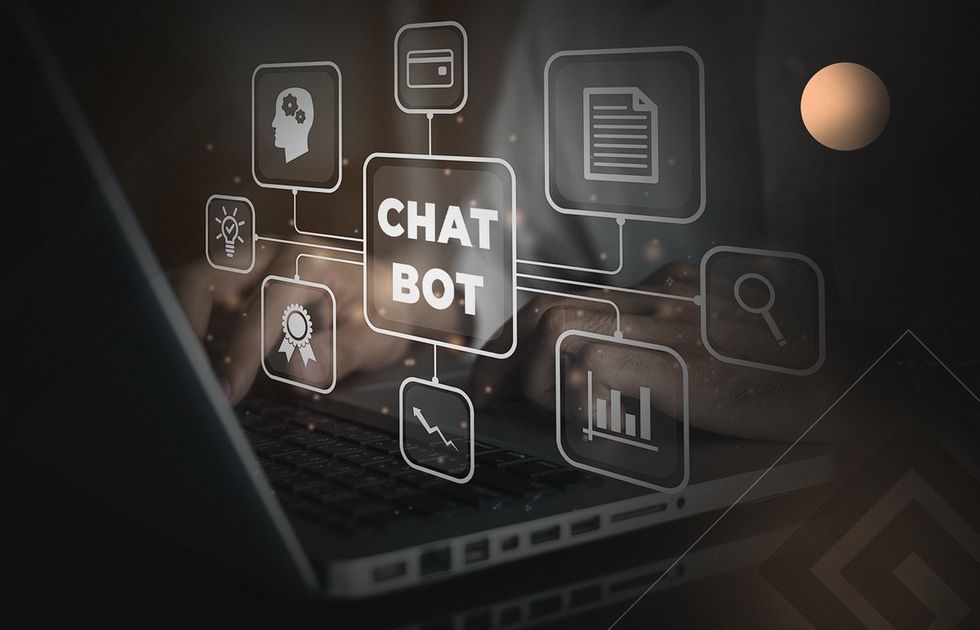
Discovery, planning, building, and launching are the four major steps you need to develop a chatbot. Whether you’re developing a bot in-house, offshore or with augmented staff, these steps are crucial for successful product building.
Discover Your Idea
This is where enterprise chatbot development starts. Our team discusses the project with a client during the discovery phase and elaborates, validates, and verifies their requirements. We can also suggest development options, solutions, or thoughts on improving the existing idea upon the discussion.
Plan Your Enterprise Chatbot
Once we know your challenges and requirements, we proceed with detailed planning of your bot’s personality to create user journeys and conversation design flows. For this, you need to:
- Assess your business needs and decide on your use cases
- Choose the right type of conversation flow
To build your chatbot’s personality, we suggest using AI and ML techniques (NLP, NLU, RPA) so it can carry on human-like conversations and learn from its experience.
Build
This is where the magic happens. With eight years of experience in enterprise chatbot development, we know all the ins and outs of building a chatbot and designing the conversation flow. Once done, we can help you train your AI bot on required data sets (e.g., support tickets, emails, third-party data).
Furthermore, we’ll prepare your product for easy and smooth scalability to cope and perform well under an increased or expanding workload.
Test and Launch
Chatbot testing isn’t like regular software testing. It challenges the QA team to foresee various, even the most unpredictable, scenarios and define how the chatbot will respond. (especially in cases when users ask questions beyond your business specifics).
And the work on your chatbot doesn’t end with the launch. You need to check conversational flows and refine answers with the information your bots collect. The best way to go through this journey is to have someone guide you in all these steps.
Acropolium’s Experience
Building enterprise chatbots is in Acropolium’s DNA. We started investigating chatbots 11 years ago and can now boast of having developed 38 custom chatbot solutions that helped our clients grow their businesses and increase revenue.
At Acropolium, we have deep knowledge of AI/ML in web/mobile development and experience in using them to create an enterprise chatbot of varying scale and complexity.
Be it a marketing, education, logistics or financial business, we can walk you through every aspect of chatbot creation and build a tailored virtual chatbot. Here’s one of client’s latest success stories on how their operations changed for the better with a chatbot:
- An independent UK leasing firm supplying heavy construction equipment to over 100 needed a bespoke inventory management and CRM platform. The system also had to expand sales via Facebook and WhatsApp and refreshed their website. Acropolium guided them through defining requirements and delivered a phased MVP built on Node.js, React, and AWS. As a result, the client achieved a fully digital asset management platform, realized a 47% increase in monthly deals, a 33% shorter sales cycle, a 25% boost in conversion rates, and grew their customer base by 15%.
Conclusion
Building an enterprise chatbot is a great way to stay ahead of the competition, offer exceptional digital customer service, simplify processes, and increase your customers’ loyalty and engagement. Powered by artificial intelligence, chatbots can simulate human-like conversations, learn from their interactions and provide a consistent experience across multiple platforms.
Modern chatbots have a huge potential in automating internal routine tasks and taking over the bulk of customer support queries. They are never tired, always friendly, and available wherever and whenever you need them.
If you want to modernize your business flow without having to rebuild your entire system, developing enterprise chatbots can be a perfect choice. Contact us today, and we’ll help you build a chatbot specifically tailored to your company’s needs and goals.












![ᐉ Enterprise Mobile App Development: [2025 Guide]](/img/articles/enterprise-mobile-app-development/img01.jpg)
![B2B Subscription Models [How it Works & Business Examples]](/img/articles/power-of-subscription-models/img01.jpg)
![E-commerce App Development: [2025 Guide]](/img/articles/the-a-z-guide-to-e-commerce-app-development-benefits-features-and-cost/img01.jpg)